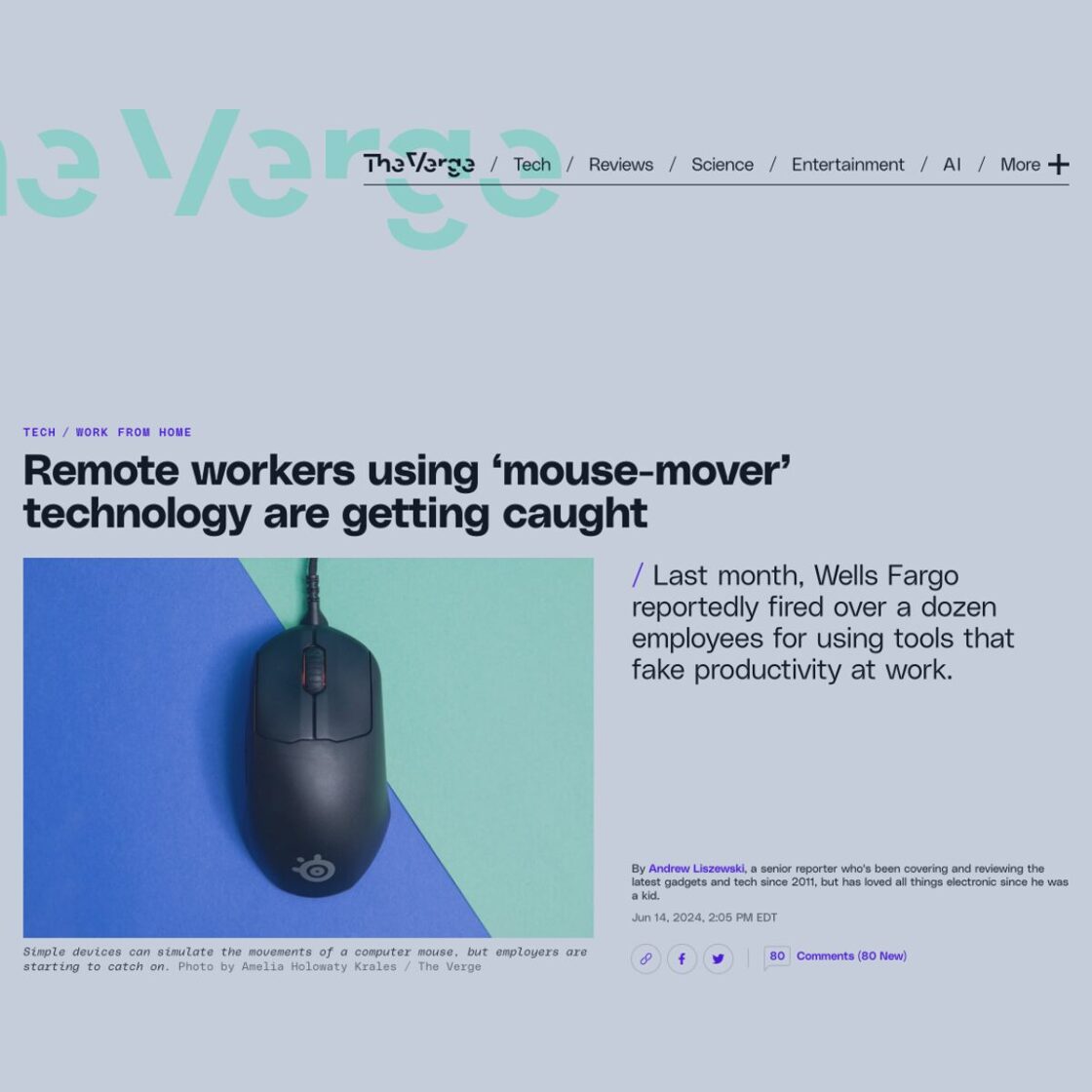Productivity is Not About Mouse Movements

Productivity is often misunderstood, and Wells Fargo’s approach is a prime example of this misconception. The company came under scrutiny when reports emerged that it “fired more than a dozen employees after an investigation revealed they were using devices or apps to simulate productivity on their computers through mouse movement.” (source: The Verge)
By equating productivity with mouse movements, they miss the essence of what true productivity entails. Such measures fail to capture genuine productivity, instead promoting a culture of surveillance that can lead to superficial activities over meaningful output.
At its core, productivity is the ratio of output produced to the inputs used. If Wells Fargo considers mouse movement as an input, the logical question arises: what is the corresponding output? The act of moving a mouse cursor is so trivial that a simple device, such as a mouse jiggler, can perform it.
This incident underscores the need for a paradigm shift in how productivity is measured, particularly in the era of flexible work. As organizations navigate this new landscape, focusing on deliverables and meaningful contributions will be key to fostering a truly productive workforce.
H. James Harrington, a renowned expert in performance improvement, once said, “If you can’t measure something, you can’t understand it. If you can’t understand it, you can’t control it. If you can’t control it, you can’t improve it.”
This quote underscores the necessity of measuring the right things. Before embarking on the measurement journey, it’s crucial to understand its purpose. Why are we measuring this? Does this input hold any real value? This understanding sets the foundation for effective productivity measurement.
Productivity encompasses the resources deployed—salaries, infrastructure, operational costs, etc.—to produce a product or service. Improving productivity can be approached in three primary ways:
- Reducing Costs While Maintaining Outcomes: This involves cutting down on inputs without compromising the quality or quantity of the output.
- Increasing Outputs with the Same Costs: This means enhancing the efficiency of the inputs to yield greater results without additional expenditure.
- Reducing Costs and Increasing Outputs Simultaneously: The most challenging but rewarding approach, where both inputs are minimized and outputs are maximized.
That is why it is important to shift the focus to team deliverables and individual contributions to these outcomes. Deliverables are tangible products or services developed for a client, whether internal or external. For a comprehensive understanding of deliverables, you can explore more here.
By focusing on these aspects, organizations can drive real productivity improvements. Moving beyond superficial metrics like mouse movements to measures that truly reflect value creation and efficiency will ensure a more productive and meaningful work environment.